Mercury is the nearest planet to the Sun, and it never strays more than 30 degrees from it. This proximity enables the celestial object to complete two orbits around the fiery heart of the universe in a single year. Interestingly, Earthlings can only see one side of the Sun’s closest planet in the solar system.
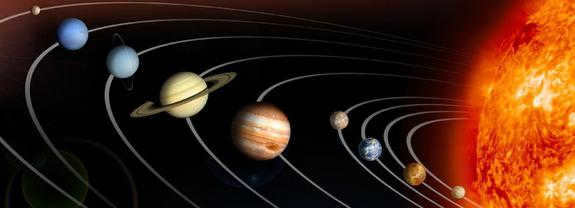

Mercury: Insights from Mythology and Astrology
In ancient Roman culture, Mercury held a similar role to the Greek deity Hermes, representing trade, craftsmanship, and acting as a messenger. Mythologically, Mercury symbolizes news, communication, and rumors. However, there is also a fascinating astronomical interpretation of this planet’s significance. As the closest planet to the Sun, Mercury is associated with rational thinking, speech, and the manifestation of thoughts. Its primary attributes include logic and calculated reasoning, with emotions and feelings taking a backseat.
Mercury possesses a profound command of the art of language, which serves as an incredibly potent tool for shaping an individual’s thoughts and actions. This power can manifest itself through a highly developed psychological prowess and the ability to mesmerize others. In terms of astrology, Mercury, being the planet closest to the sun, exerts complete dominion over Gemini, endowing them with success and the vitalizing energy they need. For individuals born under air signs, this planetary influence bestows upon them an expansive vocabulary, the ability to communicate with clarity and eloquence, and a rapid yet somewhat superficial approach to logical thinking.
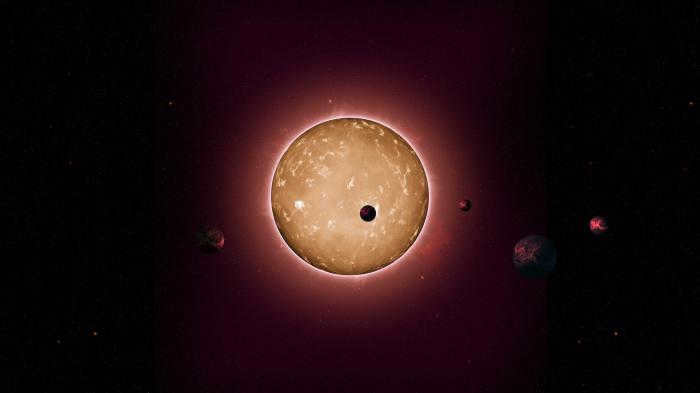
Mercury: an overview and characteristics
Situated at a distance of 58 million kilometers from the Sun, Mercury is the planet closest to our blazing star. Its orbital period lasts 88 days, completing a full revolution around the Sun in just 3 Earth months. With a velocity of approximately 50 kilometers per second, it is considerably faster than Earth. In terms of its physical properties, Mercury weighs only 0.06 times that of Earth, measures 4,880 kilometers in diameter, and possesses a density of 5,500 kg/m3.
Mercury is known for its extreme temperatures. During the day, the planet can reach scorching hot temperatures of 427° Celsius, while at night, it plummets to a bone-chilling minus 173°. In 1974, the photos captured by the “Mariner-10” spacecraft revealed a striking resemblance between Mercury’s surface and that of the Moon. According to NASA, Mercury’s core is rich in iron, and its gravity is significantly lower than that of Earth.
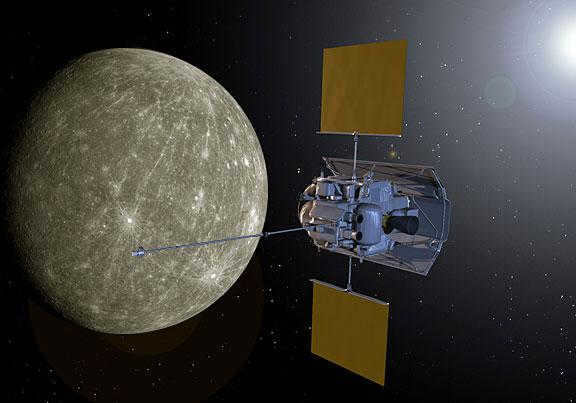
Unveiling the Secrets of Mercury
Investigating Mercury from Earth is a challenging task due to its close proximity to the Sun. The planet rarely aligns in orbit between our own planet and the celestial luminary, occurring roughly once every century. Even when this rare occurrence happens, only a fraction of the planet is visible, limiting our ability to conduct detailed examinations. A more effective approach to studying this celestial body is by utilizing various space stations that can capture high-quality images surpassing the capabilities of even the most advanced terrestrial telescopes.
The most impressive images display a diverse range of craters and fissures, all of which are under 100 meters in size, except for one massive crater known as the Caloris Basin, which boasts a diameter of 1300 km. This colossal crater is likely the result of a collision with an asteroid-like object, a truly enormous one at that, to create such an expansive hole spanning multiple kilometers. Similar to the Moon, the surface of Mercury is marked by small, bowl-shaped craters as well as larger craters with a distinct central peak. These distinctive features bear a striking resemblance to the aftermath of meteorite or asteroid impacts.
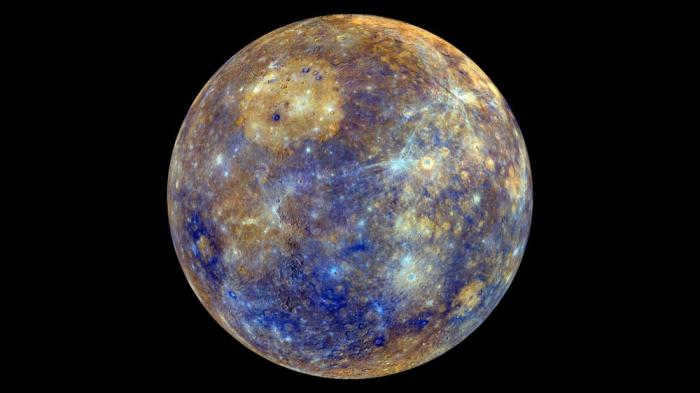
Is there an atmosphere on Mercury?
During its close encounter with the planet, the Mariner-10 space probe confirmed the presence of an atmosphere. However, due to its high temperature and close proximity to the Sun, Mercury loses its gas envelope in significant amounts. The main component of the atmosphere, helium, is mostly lost but is continuously replenished by the Sun. The atmospheric pressure near the surface of Mercury is extremely low due to the thin atmosphere, measuring 500 billion times less than that of Earth’s atmosphere.
Aside from helium, trace amounts of hydrogen, argon, and neon have been observed. Furthermore, the presence of a magnetic field leads us to infer that the planet’s core is composed of iron, a typical constituent of celestial bodies resembling Earth in terms of its composition. The outer layer, stretching 600 kilometers deep, consists mainly of siliceous rocks.
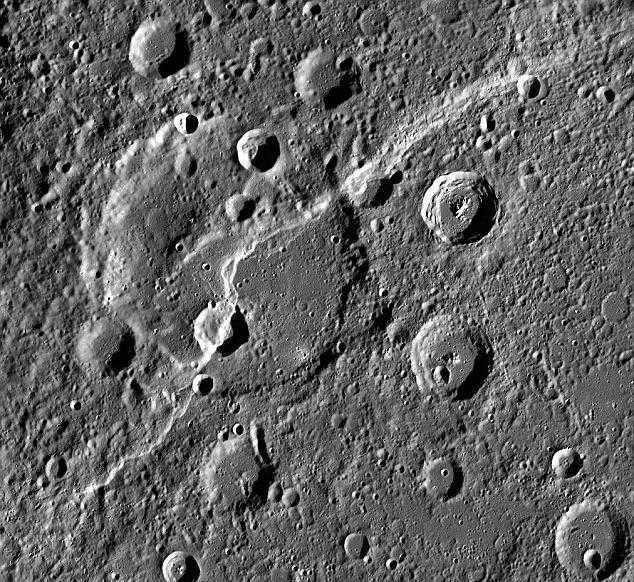
Mercury’s geological formations
When asked which planet is closest to the sun, any student can confidently answer that it is Mercury. Unlike other planets, Mercury has no natural satellites orbiting around it. By examining photographs of the planet, scientists can make certain conclusions about its surface. At first glance, the images may resemble the lunar surface, but there are distinct features that are unique to Mercury. The specific structure and shape of craters indicate the tremendous kinetic energy of objects that have collided with the planet’s surface, and the composition of its rocks has also played a significant role in shaping its landforms.
The planet closest to the Sun exhibits varying levels of erosion and crater smoothing. In comparison to craters on the Moon, craters on Mercury are shallower, and secondary craters are found at shorter distances from the main crater. Another type of landform is depressions, which are created by the sinking and subsidence of the continental portion of the surface. The remaining area is referred to as the intercratorial plateau, which bears resemblance to a tumultuous volcanic history.
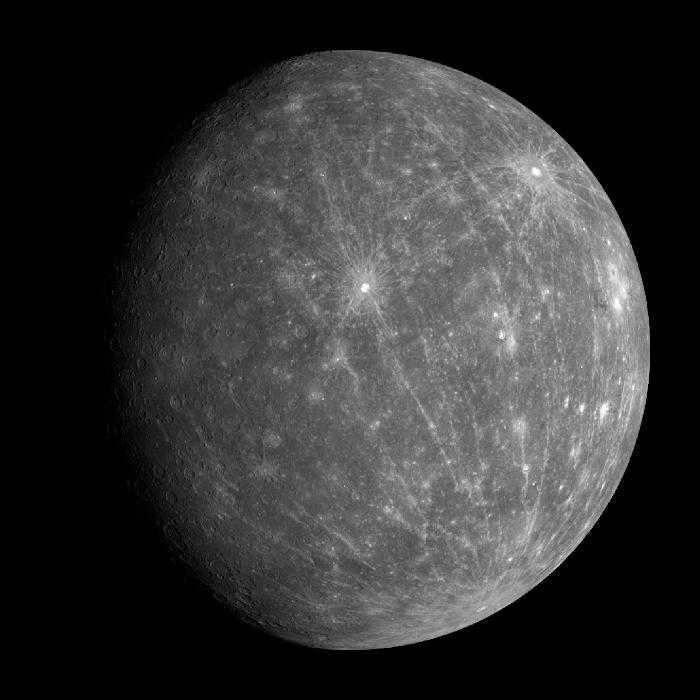
The Fascination of Scientists Throughout History with the Nearest Planet to the Sun
Mercury, along with Venus, Mars, Jupiter, and the bright star Sirius, is one of the most prominent celestial objects. The intrigue surrounding this planet can be traced back to ancient times, as evidenced by the Sumerian cuneiform annals from the 3rd millennium BC. At one point, Mercury was even believed to be two separate entities. In ancient India, it was referred to as Buddha and Roginea, while in Asian languages it is known as the Water Star, and in Hebrew, it is described as the Solar Planet.
It has been discovered that Mercury, despite being closer to Earth than the orbits of Mars and Venus, spends a significant amount of time as Earth’s closest neighbor. Additionally, there is speculation that despite the extreme temperature variations, there could be ice formations on the planet. Radar studies have revealed substances with strong reflective properties of radio waves, providing evidence for the presence of water on Mercury.
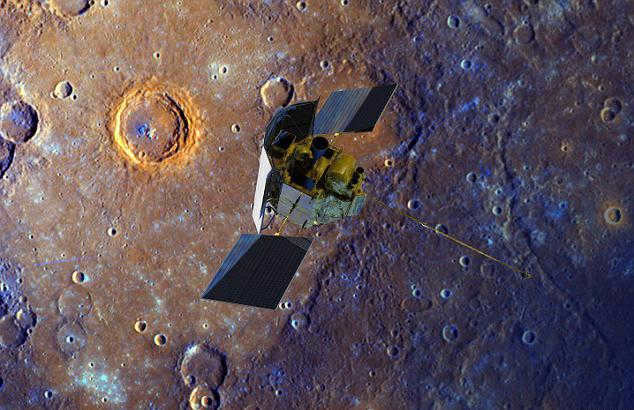
When it comes to identifying the nearest planet to the sun, the answer is undoubtedly Mercury. However, this celestial body is much more complex than it may initially appear. Despite the wealth of information and imagery gathered from space stations, numerous questions regarding its origins, the existence of an atmosphere, water, and the potential for life forms still remain unanswered.
Mercury, the closest planet to the sun, continues to be one of the most enigmatic celestial bodies in the modern era, despite being observed by ancient astronomers. Its small size and proximity to the radiant star make it difficult to acquire comprehensive data about this cosmic entity even in present times.
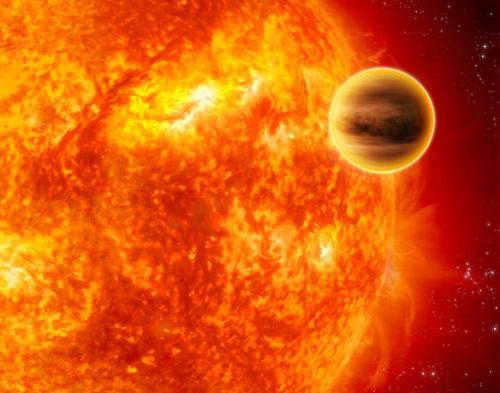
Statistics about Mercury
Mercury, named after the Roman god associated with trade, is the smallest planet in our solar system. In terms of its size, it is even smaller than some satellites. Mercury’s mass is just 5.5% of Earth’s, which is equivalent to 3.3 * 10^23 kg. Additionally, it has a much smaller radius compared to our planet, measuring only 2,439.7 kilometers compared to Earth’s 6,371 kilometers. It takes Mercury 88 days to complete one revolution around the Sun, while a solar day on Mercury lasts 176 Earth days. The planet orbits the Sun at an average speed of 48 km/s.
Distance from the celestial body
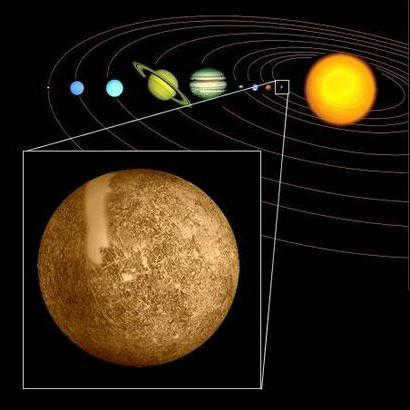
The average distance between the Sun and Mercury is estimated to be slightly less than 58 million kilometers. Due to its highly elongated orbit, this value significantly changes throughout the year. At its point of maximum approach, known as perihelion, the distance from the Sun to Mercury is 45.9 million kilometers, while at its point of maximum distance, known as aphelion, the distance increases to 69.7 million kilometers. The difference between these two positions is quite substantial, with Mercury being 1.5 times closer to the Sun at perihelion compared to aphelion.
The distance separating the planet with “wings” and the Earth varies greatly, ranging from 82 to 217 million kilometers.
Temperature patterns
The unique characteristics of the planet Mercury can largely be attributed to its exceptional position within the solar system. According to scientists, the celestial body has been gradually losing its momentum since its formation. As a result, Mercury’s rotation around its axis and the Sun has become somewhat synchronized. A day on Mercury lasts 58.65 Earth days, which is equivalent to two-thirds of a year on the planet. This synchronization has led to the emergence of what scientists refer to as “hot longitudes” – two specific regions of the planet’s surface that face the Sun during its closest approach, or perihelion. The temperature in these areas is significantly higher than the average temperature on Mercury.
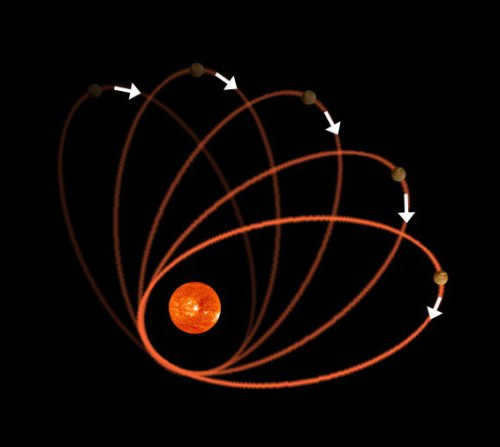
The planet exhibits notable variations in temperature throughout the day, ranging from a scorching +350 to a freezing -170 degrees Celsius. This extreme temperature difference of 520 degrees sets it apart from other celestial bodies in our solar system. The absence of a substantial atmosphere is one of the main factors contributing to this phenomenon. Additionally, the loose soil on the planet’s surface prevents heat from penetrating into its core, leading to rapid cooling at night.
Unusual Permanence
The planet closest to the Sun is distinct from Earth in its lack of seasons. This particular characteristic of Mercury can be attributed to the orientation of its axis, which is perpendicular to the plane of its orbit. As a consequence, there exist regions on the planet that are perpetually in shadow and never receive direct sunlight. These areas are situated near the poles. Scientific investigations have revealed that these regions harbor a layer of ice, reaching up to two meters in thickness.
The Unusual Behavior of the Sun
The Sun’s behavior is quite peculiar when it comes to the rotation of Mercury around its axis and around the Sun. The speeds of these rotations are not consistent over time. While Mercury rotates around its axis, it covers a certain distance in kilometers within a specific period. However, its orbital motion happens at a constantly changing speed. When Mercury is near perihelion, its orbital velocity exceeds its angular velocity of rotation. This discrepancy lasts for eight days. If we were to imagine ourselves on Mercury, we would witness the Sun’s “odd behavior.” There are moments when the Sun seems to freeze in the sky, only to start moving in the opposite direction to its usual path, from west to east. If an observer were at a longitude 90º away from the “hot longitude,” they would witness two sunsets or sunrises in a day.
Surface
Surface
is a term used to describe the outer layer or topmost part of something. It can refer to the surface of an object, such as the surface of a table or the surface of a lake. It can also refer to the surface of a material, such as the surface of a piece of paper or the surface of a wall. The surface is the part of something that is visible and can be touched or interacted with. It is what we see and feel when we look at or touch something. The surface can be smooth or rough, flat or curved, hard or soft, and it can have different colors and textures. The surface of an object or material can be important for its function or appearance. For example, the surface of a car is designed to be aerodynamic and sleek, while the surface of a basketball is designed to be grippy and bouncy. Overall, the surface of something plays a crucial role in how we perceive and interact with it.
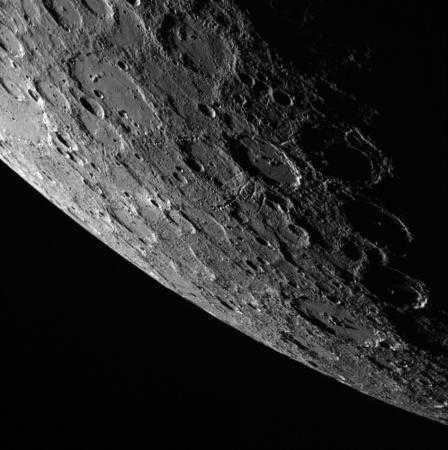
Mercury, the planet closest to the Sun, bears a striking resemblance to the Moon in terms of its topography. Through the use of the “Messenger” probe, scientists have been able to discover numerous craters on Mercury’s surface. One key distinction between Mercury and the Moon is the uniformity of Mercury’s surface, which is covered in craters. In contrast, the Moon features a significant disparity in surface relief between its two hemispheres.
The presence of these craters indicates that there have been no major crustal displacements on Mercury in the past three to four billion years, nor have there been any erosion processes. This suggests that Mercury has lacked an atmosphere since its very formation.
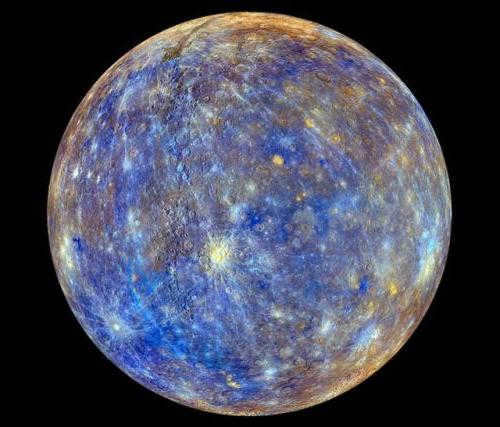
Mercury is the planet closest to the Sun. This celestial body is shielded by the Sun, which prevents scientists from exploring it thoroughly. However, with the rapid advancements in space technology, it is expected that all inquiries regarding Mercury will soon be addressed. A new research facility is set to be launched in 2016, which will provide scientists with valuable information about this mysterious planet.
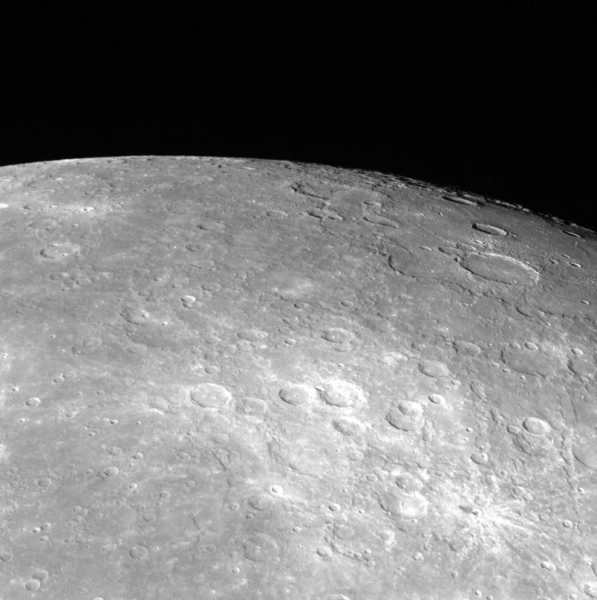
Mercury, the smallest and fourth brightest planet in our solar system, holds the title of being the closest planet to the Sun. Its elliptical orbit has an average distance of 57.91 million kilometers from the Sun’s surface, and Mercury zips around it at an average speed of 48 km/s. Interestingly, due to its proximity to the Sun, when viewed from the planet’s surface, the Sun appears three times larger compared to how it appears from Earth.
Being the smallest planet in our solar system, Mercury can even be observed with the naked eye just above the horizon near the Sun, shortly before sunrise or after sunset. During these times, this nearby planet shines like a small, radiant star.
Observing this planet is nearly impossible for most of the time, even with state-of-the-art telescopes, because of the intense energy emissions from the nearby star. Consequently, our current knowledge about this planet is quite limited.
The discovery of the truth occurred solely during the 1960s of the 20th century
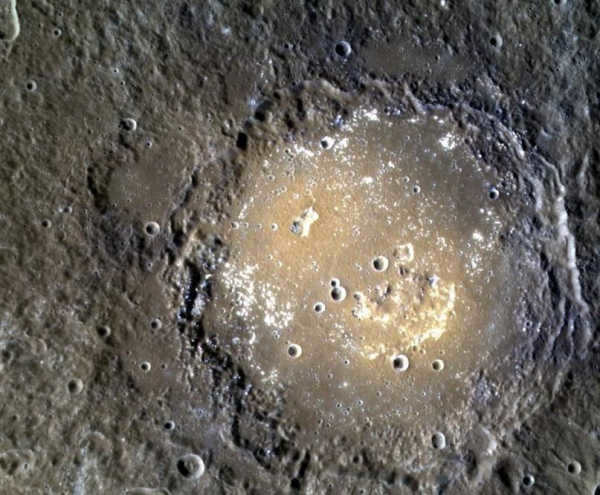
There was a long-standing belief that Mercury always has one side that is strongly heated by the sun and that it completes one full rotation on its axis in 87.97 days. This misconception arose from the observation that the same area of the planet is consistently visible after a certain period of time – the triple synodic period.
That is, every 348 Earth days, which, in turn, is approximately equal to 352 days, which, as it was later discovered, make up six times the rotation period of Mercury. This accounts for the observation that after a certain period of time, almost the same area of the planet is visible. The truth was only discovered in the 1960s, thanks to radar, which revealed that a day on Mercury is equivalent to 58.65 Earth days, or 2/3 of a Mercurian year.
A truly one-of-a-kind occurrence

The Rachmaninoff Basin on Mercury
The synchronization of the periods of rotation around the Sun and the rotation of Mercury around its own axis is a completely unique phenomenon within the Solar System. This is thought to be explained by a potential decrease in the momentum of motion and a deceleration of Mercury’s rotation, which was initially faster. Eventually, both periods became interconnected by an integer ratio due to the tidal influence of the Sun. Consequently, it is observed that Mercury completes one and a half revolutions around its axis in one Mercurian year, and the solar day on its surface lasts for three Mercurian sidereal days or two Mercurian years.
Two sunrises, two sunsets
This combination of planetary movements gives rise to another completely unique phenomenon found only on Mercury – after a certain period of time, the Sun in the sky of Mercury momentarily pauses and then starts moving in the opposite direction (from west to east). At longitudes that are 90° apart from the meridians, the Sun rises and sets twice.
Briefly about the planet
Surprisingly, not everyone can answer the question of which planet is closest to Earth. However, the answer is simple – it’s Venus. It is the second planet from the Sun, while Earth is the third. The distance to its neighboring planet, Mars, is much greater.
When Venus and Earth approach each other, their minimum separation can be reduced to a mere 38 million kilometers. Prior to and following this event, Venus exhibits the largest deviation from the Sun and shines with the utmost radiance in our celestial sphere. Conversely, when the planets diverge to their maximum distance, they become separated by a staggering 261 million kilometers.
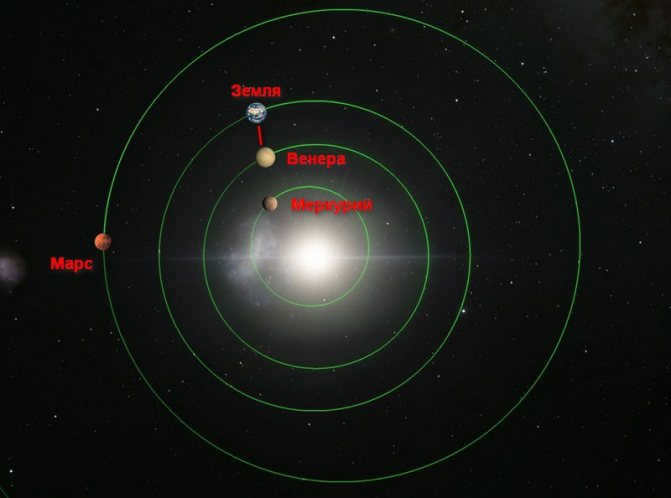
When it comes to proximity to Earth, Venus takes the top spot as the nearest planet. It is only 38 million kilometers away.
Types of Planets
There are two distinct types of planets – terrestrial (Mercury, Venus, Earth, Mars) and gas giants (Jupiter, Saturn, Uranus, Neptune).
The terrestrial planets in our Solar System are relatively small in size, have rocky surfaces, and are positioned closer to the Sun compared to the gas giants. Mercury and Venus are the planets that lie closer to the Sun than Earth.
The gas giants include Jupiter, Saturn, Uranus, and Neptune. They are mainly composed of gas and also have rings made up of ice dust and rocky debris.
Pluto, which has a diameter of 2320 km (while Mercury’s diameter is twice as large), is the ninth planet in our solar system. Unlike the other planets mentioned above, Pluto is not included in any specific group because it is the farthest from the Sun. Despite its smaller size, Pluto still holds the status of a dwarf planet.
Now, let’s shift our focus to the Sun, the main luminary of our galaxy, and explore the positioning of each planet in relation to it.
Which planet is closest to Earth?
Scientific data suggests that Venus is the planet closest to Earth. The minimum distance between the two planets is approximately 38 million kilometers. This proximity occurs when the planets align in their respective orbits around the Sun. As the planets continue to orbit the Sun, the distance between them fluctuates.
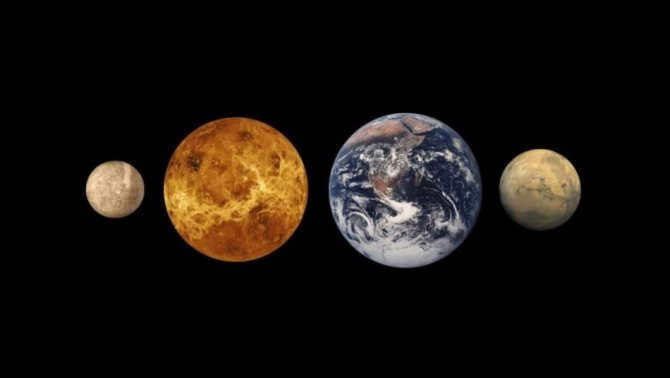
Venus
Fascinating information:
- Venus is often referred to as Earth’s twin because of its similar density and size. Both planets are rocky and belong to the same class. However, despite being the closest planet to Earth, Venus remains relatively unexplored due to its extremely hostile climate.
- It is a well-known fact that the majority of flying objects and satellites that transmit data about the planets to Earth are unable to capture images of the planet’s surface due to the presence of acid clouds. The planet’s atmosphere is highly hostile, with active volcanoes and craters contributing to its aggressive nature. As a result, the surface temperature reaches a scorching 400 degrees Celsius, a value that completely negates the possibility of life existing on the planet.
- There is a belief that Venus lacks any natural satellites. However, there have been hypotheses suggesting that at one point, Mercury served as a satellite to Venus, until it deviated from its orbit and altered its trajectory. This hypothesis could potentially explain why Venus experiences extremely high temperatures. Initially, the planet may have been habitable, similar to Earth, until the resonance and separation of Mercury and Venus resulted in significant changes to their atmospheres, rendering them inhospitable.
- Venus bears a resemblance to Earth in its appearance, but its characteristics are far from friendly. The planet is plagued by frequent volcanic eruptions and the presence of acidic vapors, which hinder the ability of research vehicles to observe it. Numerous research tools have attempted to penetrate Venus, but the majority of them have been destroyed due to the harsh conditions caused by the acidic clouds.
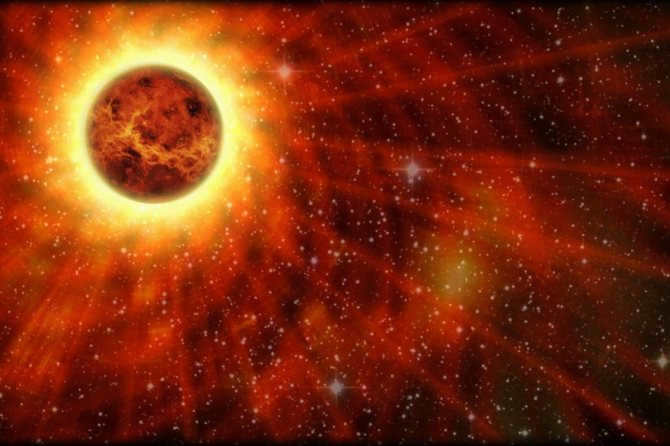
- Venus
Venus is the second planet from the Sun, located between Mercury and Earth. It is named after the Roman goddess of love and beauty. Venus is often referred to as Earth’s “sister planet” because of their similar size and composition.
Sun
The Sun is a yellow dwarf star and has been around for approximately 4.5 billion years. It is currently in the middle of its lifespan. In about 4 billion years, it will enter its red giant phase, expanding in size and engulfing the orbit of Earth. According to scientists, this event will lead to the extinction of life on Earth due to the high temperatures. Eventually, the Sun will exhaust its nuclear fuel and become a white dwarf.
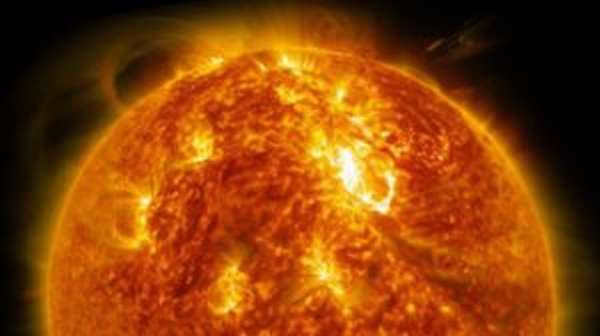
The Sun
Sister Planet Resembling Earth
Based on observations, scientists have made an interesting discovery – Venus shares many similarities with Earth. Both planets have similar composition, structure, mass, size, and density, which led scientists to call them “sisters”. The only difference between them is their diameter, with Venus being just 638 kilometers smaller. The closest planet to Earth has a core that stretches for about six kilometers and is surrounded by a thick mantle. This molten and viscous substance extends for about 3,000 kilometers. The outermost layer, known as the crust, has a depth of approximately 30 kilometers, similar to Earth. However, there is still an ongoing debate among scientists regarding the nature of Venus’ core – whether it is solid or liquid. At present, it is impossible to determine with certainty. Some scientists propose that it is liquid, similar to Earth, while others argue the opposite. One notable difference between Venus and Earth is the absence of a magnetic field on Venus. It is believed that the heat generated by a liquid core is necessary for the formation of a magnetic field.
In contrast to its gaseous counterparts Uranus and Jupiter, Saturn possesses a high density. It falls into the category of rocky objects within the Earth group, characterized by a solid and stony surface.
Mercury
Mercury holds the distinction of being the smallest planet in terms of size. Is it Venus or Mercury that is closer to our sun? Well, it is actually Mercury that holds the closest proximity to the Sun. The planet exhibits an extremely slow rotational speed, completing one and a half revolutions on its axis for every full revolution around the primary star. Temperatures on Mercury can plummet to minus 180 degrees Celsius at night, while soaring to plus 430 degrees Celsius during the day.
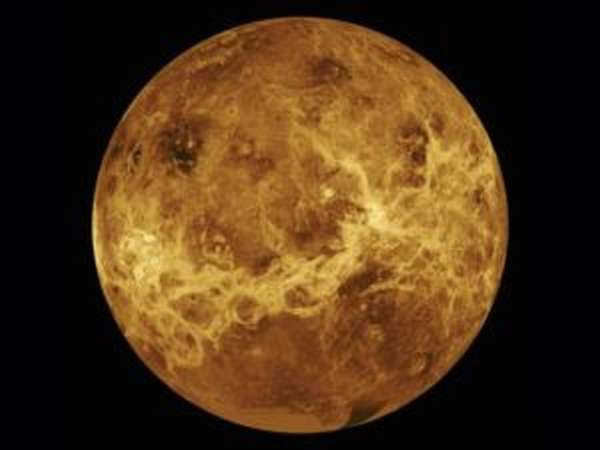
Mercury
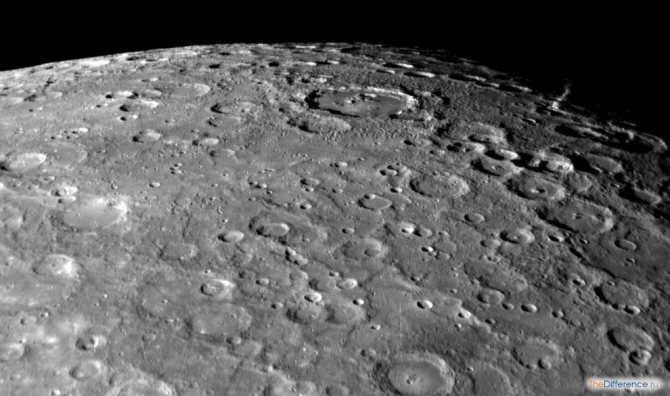
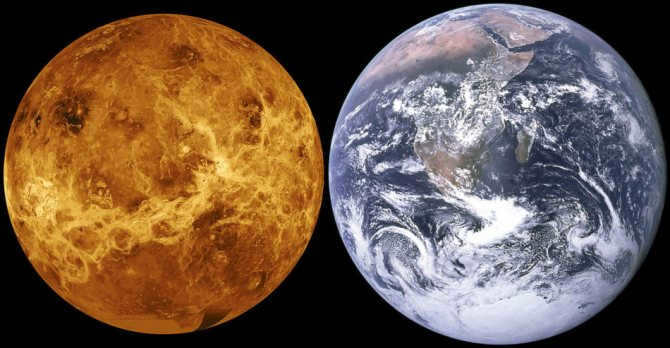
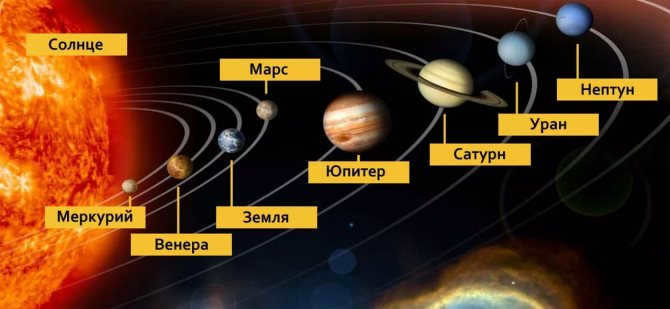
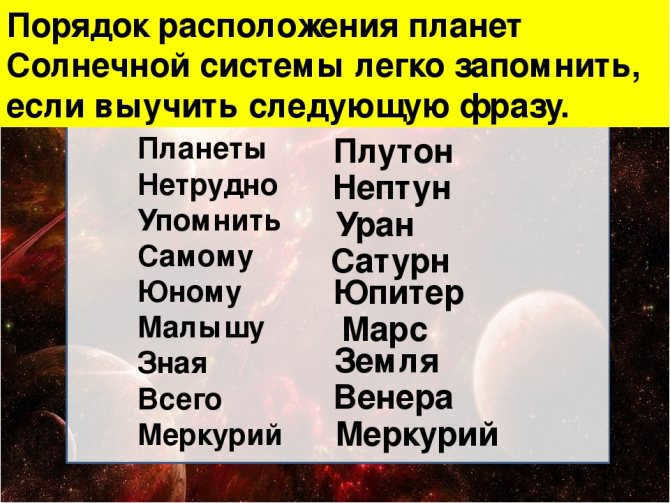
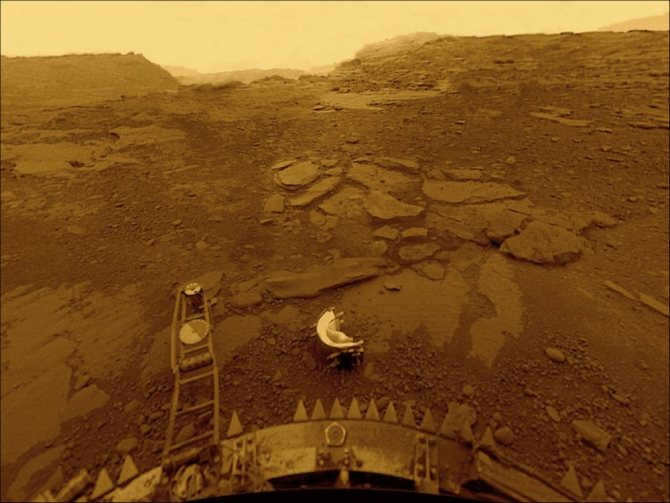
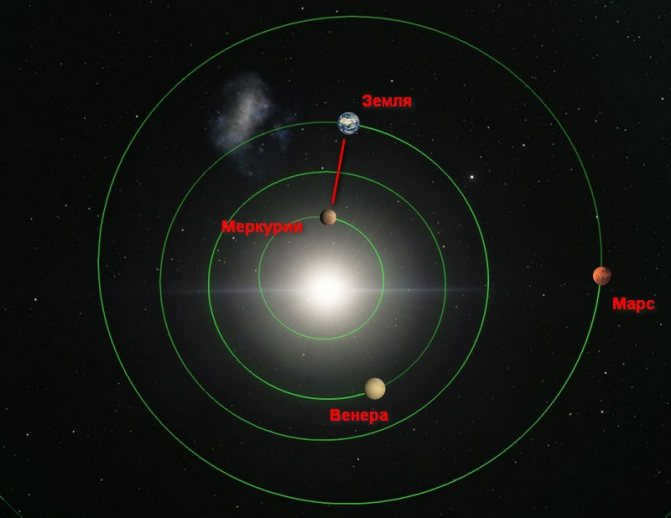
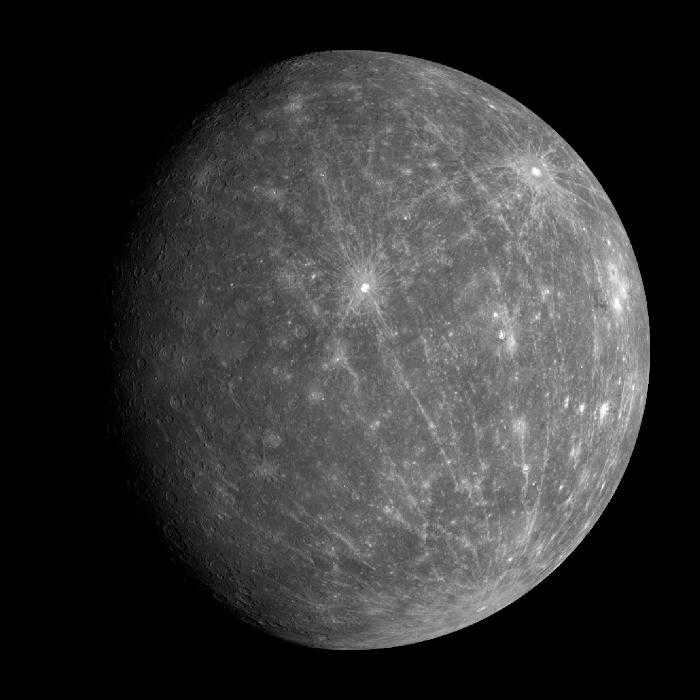
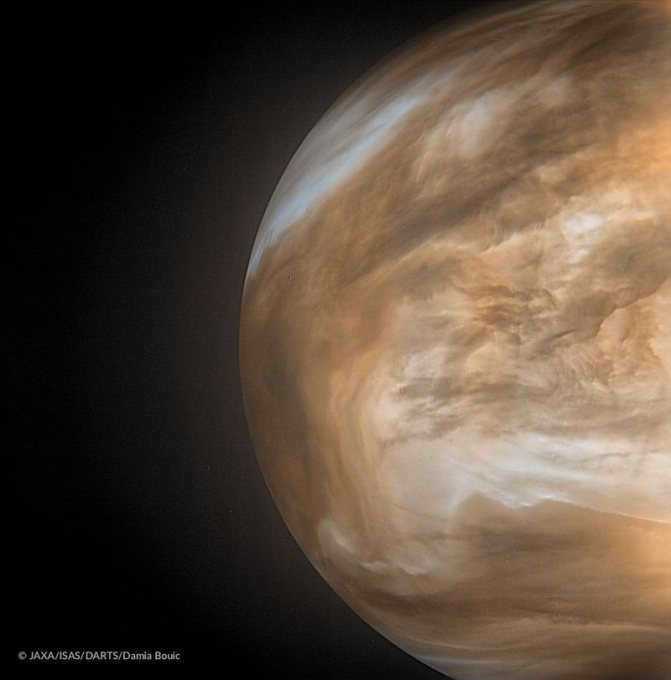
Here is the information from NASA: the approximate radii of the eight planets in our solar system (from smallest to largest), along with a rounded percentage of their size compared to Earth.
| Planet | Radius | Percentage of Earth size |
| Mercury | 2440 km; | 38% of the size of Earth; |
| Mars | 3390 km; | 53% the size of Earth; |
| Venus | 6052 km; | 95% the size of Earth; |
| Earth | 6371 km; | |
| Neptune | 24,622 km; | 388% the size of Earth; |
| Uranus | 25,362 km; | 400% the size of Earth; |
| Saturn | 58,232 km; | 945% the size of Earth; |
| Jupiter | 69,911 kilometers; | 1120% the size of Earth. |
Venus
The planet known by this romantic name is surrounded by a thick carbon dioxide cloud. It shares similarities with our own planet in terms of mass and size. Between Mars and Venus, which is closer to the sun? Venus takes the second position from the Sun, while Mars is in fourth place. Venus holds the title of the hottest planet due to its greenhouse effect.
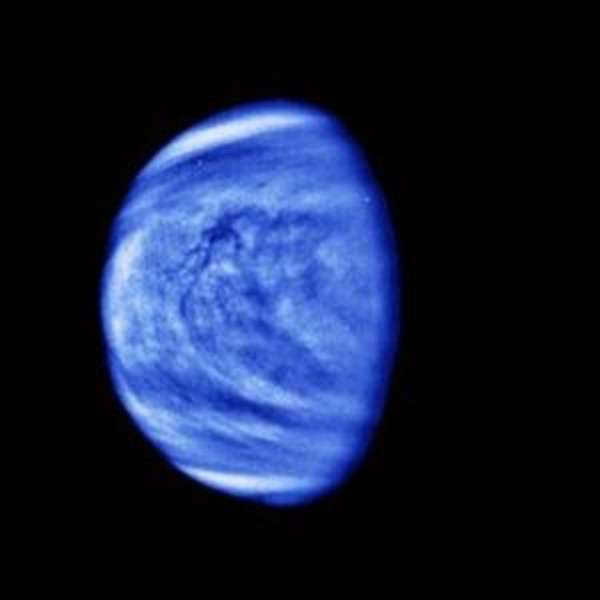
The planet Venus is considered to be the closest planet to the Sun in our solar system. With its average distance of about 108 million kilometers from the Sun, Venus is second only to Mercury in terms of proximity. Venus is often referred to as Earth’s “sister planet” due to its similar size and composition. It is known for its thick atmosphere, which is composed mainly of carbon dioxide and creates a greenhouse effect that leads to extremely high surface temperatures. Venus is also famous for its dense cloud cover, which obscures its surface from view. Despite its proximity to the Sun, Venus has a longer day than Earth, taking about 243 Earth days to complete a full rotation on its axis. In terms of appearance, Venus is often described as the brightest object in the night sky after the Moon. It can be easily seen with the naked eye and has been observed for centuries by astronomers around the world.
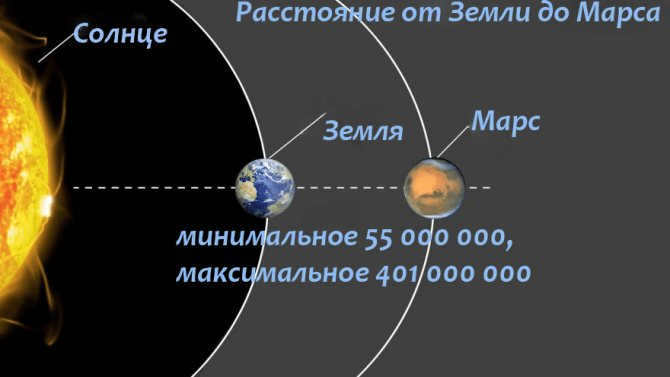
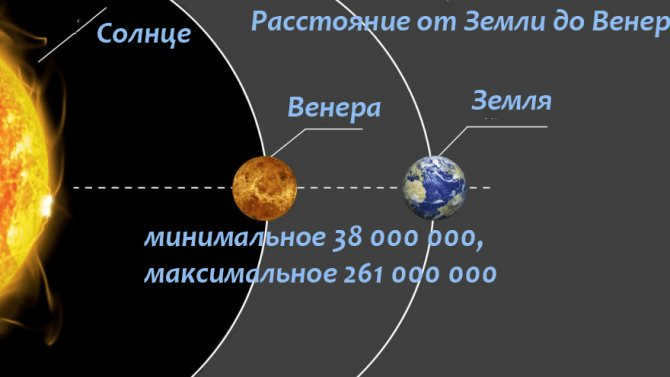
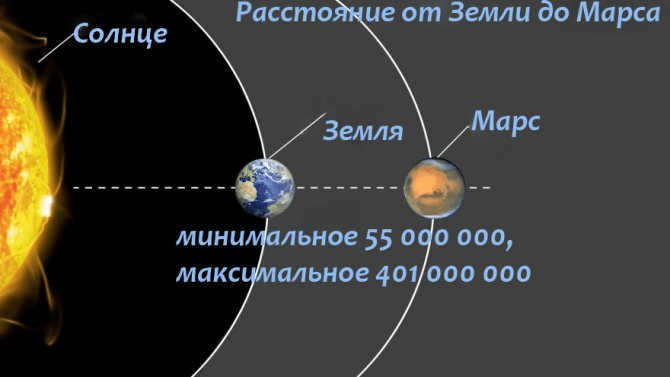
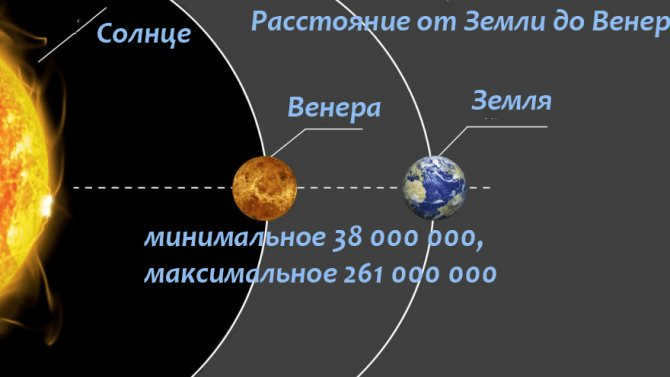
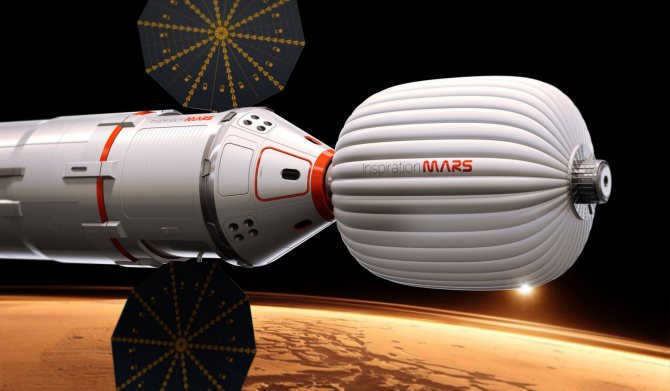
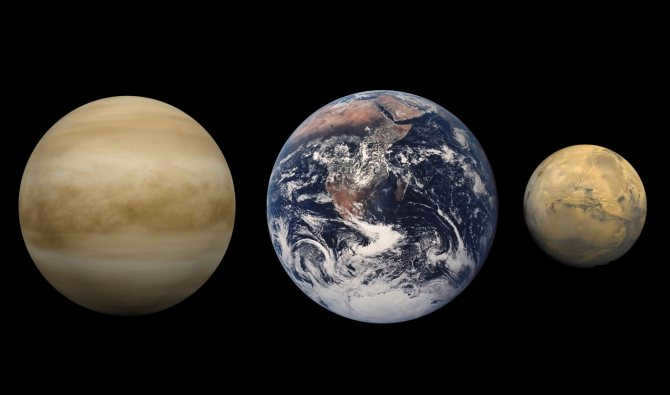
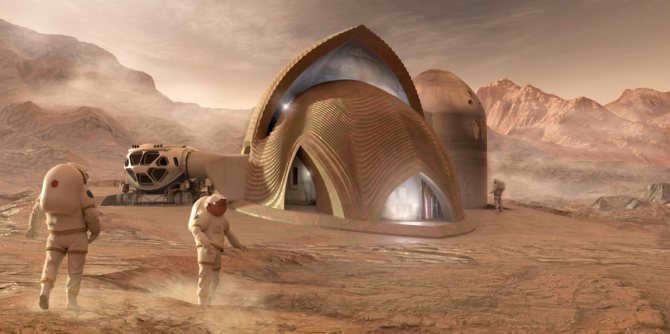

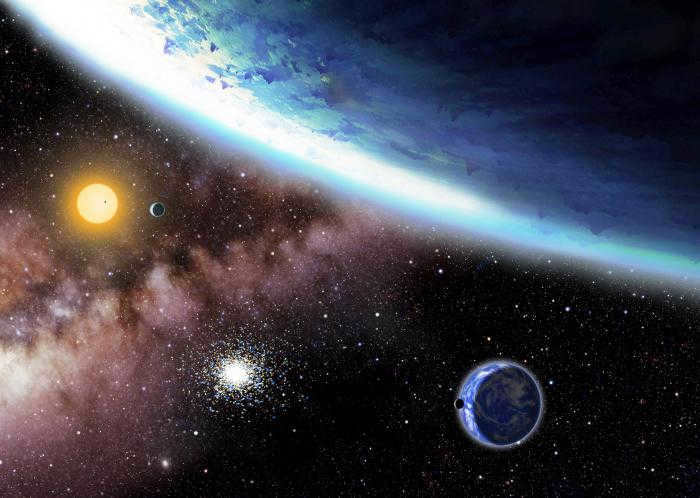
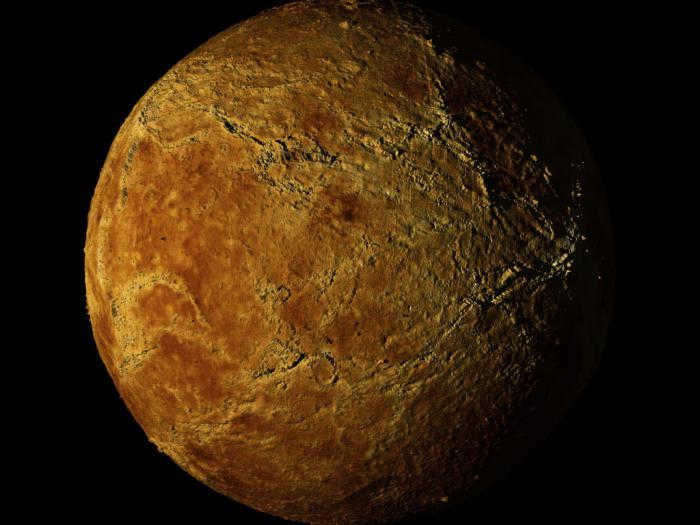
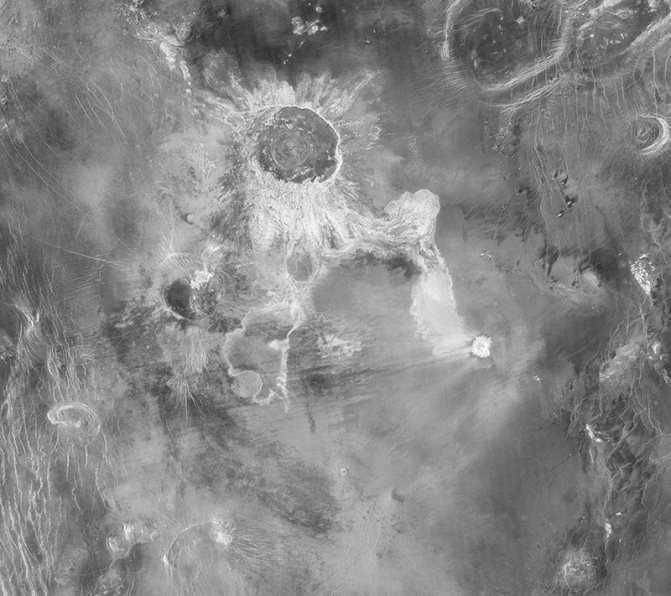
Mercury, similar to the ancient Greek god Hermes, was worshipped by the Romans as the god of commerce and craftsmanship, and also served as a messenger. In mythology, Mercury is associated with news, communication, and rumors. From an astronomical perspective, there is an intriguing interpretation of its significance. As the planet closest to the Sun, Mercury represents rational thinking and the manifestation of thoughts through speech. Its primary qualities include logic and calculated reasoning, while emotions and feelings are disregarded.
Mercury possesses a profound understanding of the power of language, which is among the most potent tools for exerting influence over individuals. This influence can be expressed through highly developed psychological energy and the capacity to mesmerize. When it comes to the zodiac signs, Mercury, the celestial body closest to the Sun, holds complete dominion over Gemini, endowing them with triumph and the essential vitality. For individuals born under air signs, this planet bestows an expansive lexicon, the aptitude for articulate, significant, and eloquent discourse, and rapid, albeit somewhat superficial, rational thinking.
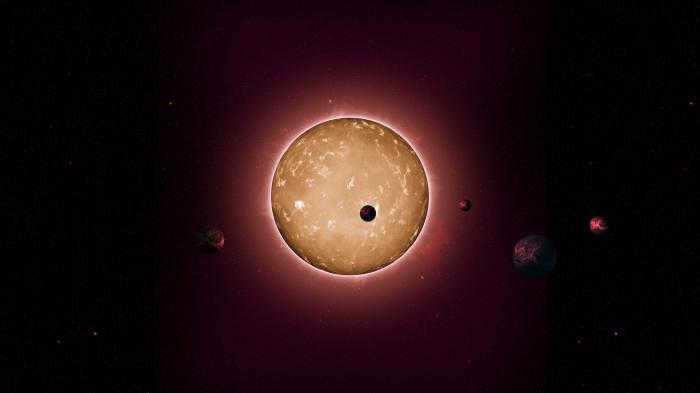
Mother Earth
The origins of life on this celestial body can be attributed to its exceptional atmosphere composed of carbon and hydrogen, as well as its abundance of oxygen and ideal temperature. What is the distance between the Earth and the yellow dwarf star? The Earth, being the third planet, revolves at a distance of 149 million kilometers from this colossal star. It is this specific distance that has fostered the perfect conditions for the inception and evolution of life.
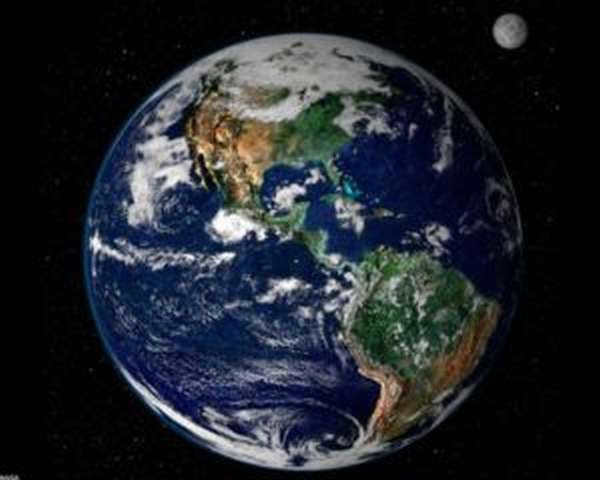
The planet closest to the Sun is Earth.
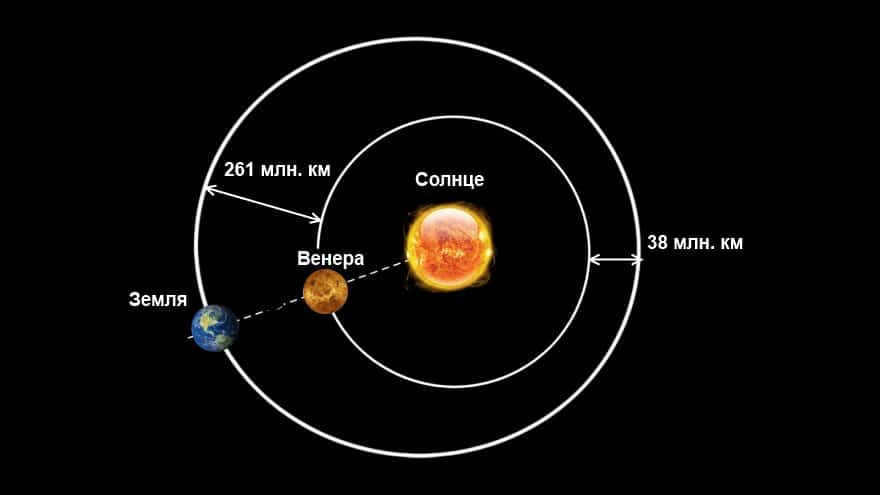
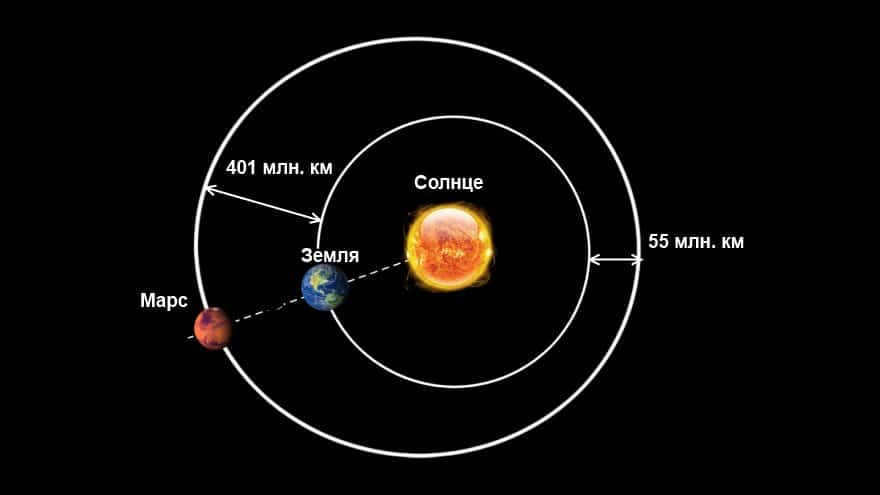
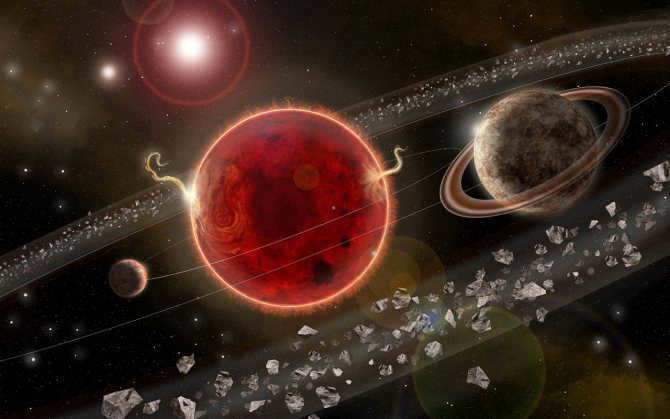

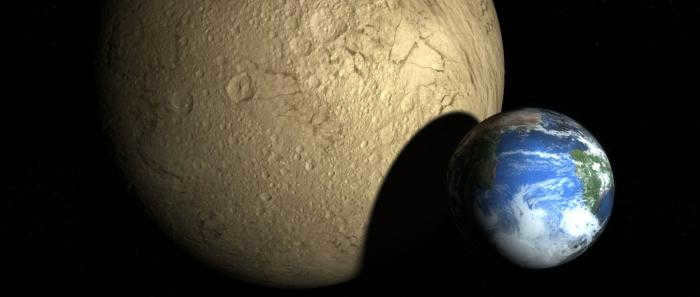
Astronomers have been left disappointed by such studies. Until recently, the true nature of the calm and uniform light emitted by Venus remained a mystery. It was only through the use of radar that scientists were able to study this celestial object in depth. In 1997, the Geological Survey of America created a comprehensive map of the planet’s surface. Venus, the closest planet to Earth, is completely devoid of water. It is believed that it once had water, but over time it evaporated, leaving behind vast basins and long channels carved by volcanic lava.
Over 160 large volcanoes have been discovered on the surface of Venus. Some of these volcanoes are incredibly massive, measuring over 100 kilometers in size. Observations have confirmed that they are actively erupting lava. While there is no typical rainfall on the Venusian surface, the thunderstorms observed in its atmosphere have the potential to trigger volcanic activity.
Using mathematical calculations to determine the elevations, astronomers have discovered two continents on this planet: Ishtar and Aphrodite. Both of these continents are home to impressive features. Ishtar is home to the highest peak on the planet, the towering Maxwell Mountains, which reach a staggering elevation of eleven kilometers. Aphrodite, on the other hand, boasts the magnificent volcano known as Maat. Upon further exploration, the American spacecraft Magellan determined that none of the craters on the planet exceeded a diameter of 2,000 kilometers. This suggests that any smaller meteorites that may have impacted the planet were simply incinerated in its harsh atmosphere. The largest crater discovered so far covers an area of 30 kilometers. Additionally, there are no large potholes on the planet, leading researchers to believe that it is relatively young compared to Earth, our closest neighbor.
Mars
Mars has a similar structure to Earth, but it has a significantly smaller mass and is only half the size. If Mars had both water and an atmosphere, it would potentially be able to support life. Despite its similarities to Earth, Mars has a longer year, lasting twice as long as ours, although its day length is the same. Mars is also home to two small satellites, Deimos and Phobos, which resemble asteroids and orbit around the planet. Interestingly, Mars is actually closer to Earth than Neptune, which is a common misconception. Some people mistakenly believe that Mars is also closer to the Sun than Earth, but this is not the case.
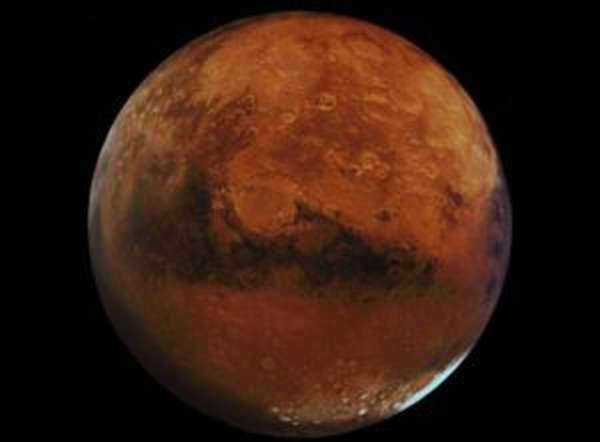
The planet we commonly know as Mars.
Exploring Mars
In ancient times, when it appeared during sunset and sunrise, it shone so brightly and exquisitely that stargazers gave it the name Venus, after the ancient Greek goddess of love. This celestial body, the only one with a feminine name, still emanates romance, femininity, and sophistication. Astronomers were not mistaken, as the closest planet to Earth, it ranks among the top three brightest cosmic objects, after the Sun and the Moon. In the early 17th century, Galileo Galilei confirmed this fact through his simple telescope. The scientist observed the movement of this celestial object across the sky and provided the first scientific description. Mikhail Lomonosov later discovered its atmosphere, solidifying its position among the eight planets. It would take several more centuries to truly get to know this planet.
Jupiter
Jupiter is the largest planet in the solar system. If its mass were larger, it would have become a star instead of a planet. The planet’s atmosphere is primarily composed of hydrogen, with helium, sulfur, phosphorus, and ammonia making up 15% of its composition. Jupiter has a day length of 10 hours and a year length of 144 months. Additionally, it boasts over 60 satellites and 4 rings.
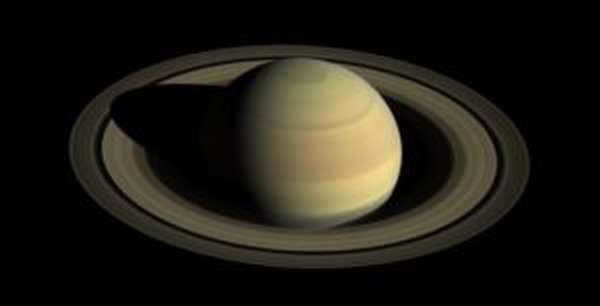
Jupiter
Kepler-62 f.
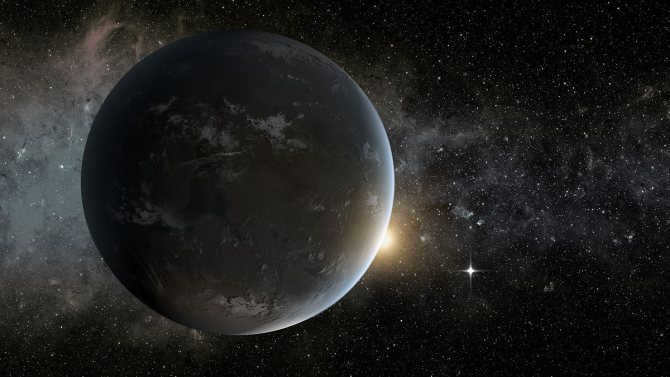
0
Source:
Star system: Kepler-62 Constellation: Lyra Distance from the Sun: 1,200 light years Earth-like index: 0.83 This planet is one of the most similar to Earth that we know of. Its Earth-like index is 0.83 out of 1.00. However, scientists are not primarily concerned with that. Kepler-62 f is a planet that is 60% larger than Earth, one and a half times older, and most likely completely covered in water. The planet orbits its parent star every 267 days. The temperature on this planet can reach +30°C to +40°C during the day and +20°C to -10°C at night. The fact that we are separated from this planet by 1200 light-years is not something to overlook. This means that what we see of Kepler-62 f today is actually what it was like 815 Earth years ago.
Saturn
Saturn possesses a density that is lower than one: in the event that there existed an ocean multiple times the size of this celestial body, Saturn would not be submerged within it. This magnificent planet is adorned with a multitude of rings. In close proximity to Saturn are its satellites, a number of which are quite sizeable. Among these satellites, Titan stands out as an exceptional one due to its atmosphere bearing a striking resemblance to that of Earth’s, and its atmospheric pressure being only 1.5 times greater than our own.
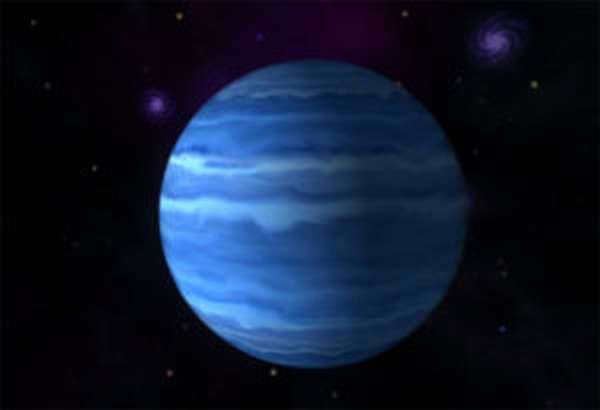
Saturn is a planet in our solar system. It is known for its beautiful rings made up of ice and rock particles. Saturn is the second largest planet and is made mostly of hydrogen and helium. It is famous for its unique and stunning appearance.
Uranus
Uranus is another planet in our solar system. It is different from other planets because it lies “on its side” in comparison to the other planets. This means that its axis of rotation and the ecliptic plane are parallel to each other. Uranus has a blue-green color and is often referred to as the “ice giant” because it is composed mostly of water, ammonia, and methane. It has 27 satellites and 13 rings. Uranus is also known for being the coldest planet, with temperatures reaching as low as minus 222 degrees Celsius. In addition, it has incredibly strong winds, with speeds reaching up to 580 km/hour. Scientists have discovered that Uranus has two major magnetic poles and two minor poles, thanks to the Voyager 2 spacecraft which explored the planet.
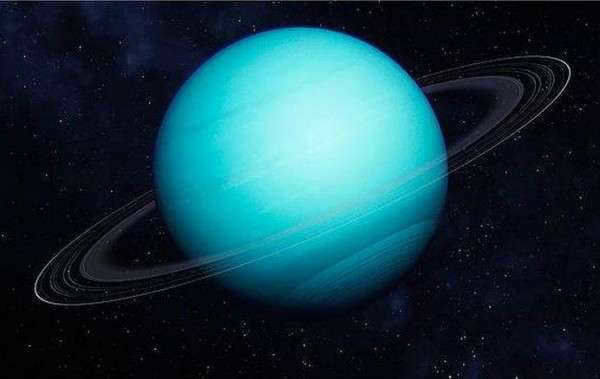
Uranus
The Earth’s satellite is the moon
The moon is the Earth’s closest celestial object. It illuminates the night sky with reflected light and captures the imaginations of dreamers and poets. The moon is a relatively large satellite, with a radius of 0.273 times that of the Earth, or approximately 1737 kilometers, and a mass of 7.3477-1022 kg, which is 0.0123 times the mass of the Earth.
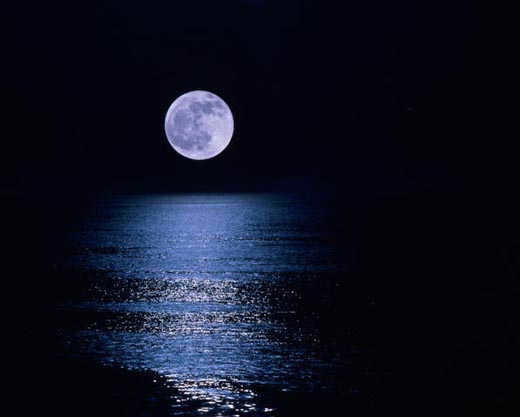
The Moon possesses an atmosphere; however, in contrast to Earth’s atmosphere, it is quite tenuous and unsuitable for respiration. Due to the absence of atmosphere, the lunar surface is constantly bombarded by both large and small meteorites, with the larger ones making a considerable impact on the lunar topography, resulting in the formation of rather deep craters and depressions.
Neptune
This celestial body is composed primarily of a mixture of methane, ammonia, and water, making it a gaseous planet. However, it also contains a solid rocky core at its center. The presence of methane gives Neptune its distinct blue color. Additionally, Neptune is accompanied by 14 satellites and 6 rings. Unfortunately, our knowledge about this planet is limited due to its significant distance from Earth.
Caution! The discovery of Neptune was made possible through precise mathematical calculations. It is worth noting that Neptune holds the title for being the windiest planet in our solar system, with hurricane winds reaching speeds of up to 700 km/h, as reported by the Voyager 2 spacecraft to scientists.
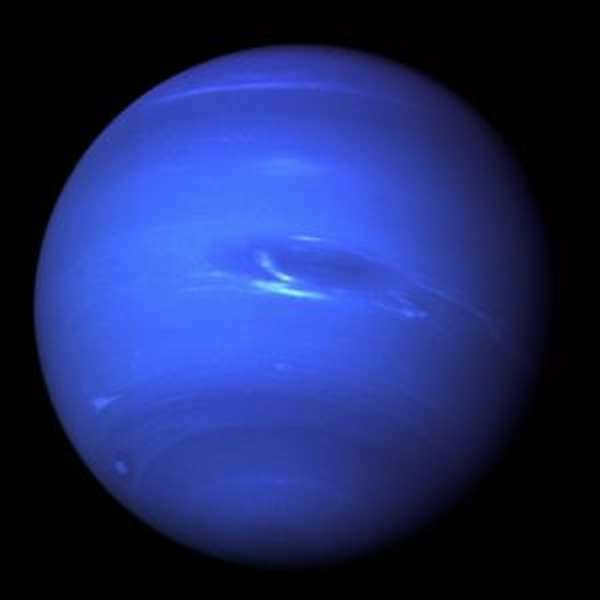
Neptune
Our galaxy
Our galaxy is known as the Milky Way. Scientists believe that the Milky Way is a spiral system that spans approximately 100,000 light years in diameter and has a thickness of 1 light year.
Furthermore, their calculations indicate that it consists of 150-200 billion stars and a vast array of other celestial objects.
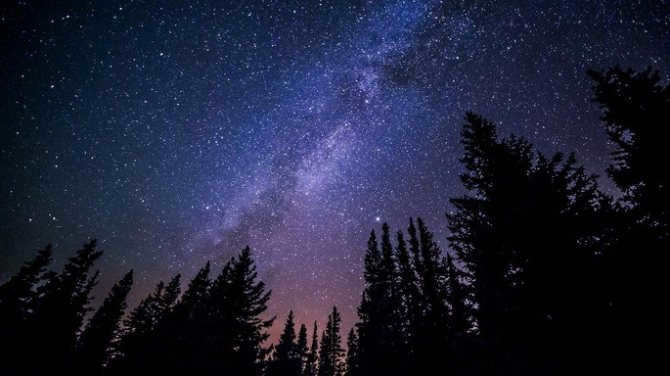
How to Observe the Milky Way
In theory, it is possible to observe the Milky Way at any time of the year, in any part of the world. However, the optimal months for observation are typically from mid-March to mid-October.
To successfully view the Milky Way, it is crucial to escape from areas with high levels of light pollution, such as cities and even villages. Thus, it is recommended to venture as far away as possible from populated regions.
Pluto
Pluto is classified as one of the dwarf planets. Scientists believe that its rocky core is enveloped in a massive layer of ice, measuring approximately 200 km in thickness. Limited knowledge is available due to its extreme distance from the Sun. Furthermore, its atmosphere is inhospitable, comprised of nitrogen, methane, and carbon monoxide. The planet has three known satellites – Charon (previously presumed to be the sole satellite), Hydra, and Nikta. Pluto’s diameter is only a few times larger than that of Charon.
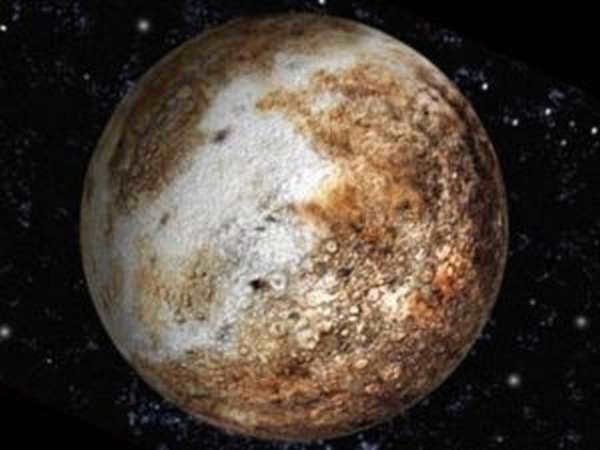
Pluto
Which planet is closer to Earth, Mars or Venus?
Mars is the second closest planet to Earth. It is located just over 40 million kilometers away at its closest point. Mars has been extensively studied compared to Venus, thanks to its slightly different atmosphere which allows for spacecraft landings. Multiple expeditions have already been sent to Mars, although living on its surface remains challenging due to the high levels of carbon dioxide that make the air unbreathable for humans.
Features of Mars:
- According to scientists, there is a strong possibility that Mars once hosted life, as it closely resembles Earth in terms of its composition and characteristics. However, it is also known to exhibit some aggressive tendencies.
- Historically, our predecessors attempted to observe this planet and noticed a prominent red spot, leading them to label it as belligerent. In reality, Mars is quite serene and tranquil. The abundance of iron oxide on its surface contributes to its distinctive red hue.
- Due to the powerful winds and high atmospheric rarefaction, there are intense dust storms that lift this red dust into the air. Below the icy surface, there are traces of water. Hence, it is highly plausible that there were and will be living organisms present here. The aquatic conditions are favorable for the growth and evolution of life forms. However, due to the elevated levels of carbon monoxide, the current conditions do not support life. Perhaps in the future, circumstances will change and Earth will successfully establish a colony on Mars.
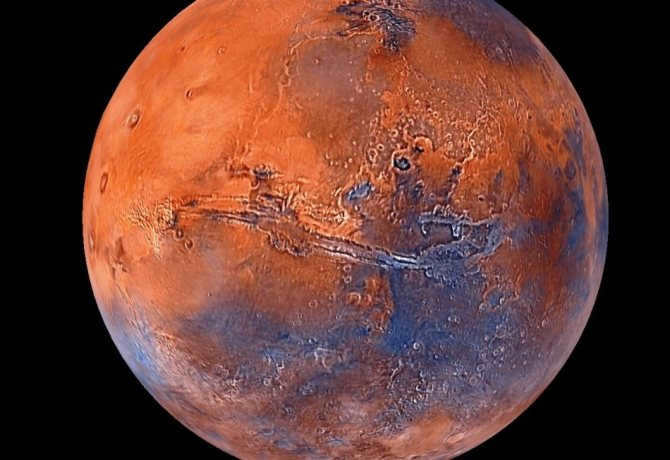
A planet known for its belligerence
For scientists, astronomers, and those who have a keen interest in astronomy, the planet closest to the Sun is always a fascinating subject. Mercury, with a distance of just under 58 km (57.91 km) from the Sun, holds the record for being the planet closest to our central star in our solar system. This close proximity, however, presents a challenge for observing Mercury. The brightness of the Sun’s disk makes it difficult to see, and it can only be observed from Earth during morning and evening twilight, when it is at the furthest point of its elongated elliptical orbit from the blinding light of the Sun. Due to these factors, Mercury often appears as the morning and evening star in many cultures around the world.
What have we learned about the properties of Mercury?
After gaining knowledge about the planet closest to the Sun, we have discovered several unique characteristics. The ancient Romans aptly named it after their fastest god, as Mercury does indeed have a remarkable speed compared to other celestial bodies in our solar system. Being the closest planet to the Sun, its orbit has the smallest radius. It completes a full orbit in approximately 88 (87.97) Earth days. Mercury also rotates on its axis at a slow pace. Its solar day lasts for 175.5 Earth days. At the equator, it rotates at a speed slightly exceeding 10 (10,892) km/hour. Its sidereal day, measured relative to distant stars, is 58.65 Earth days.
After considering the query regarding which planet is the nearest to the Sun, the issue of its structure naturally arises. Mercury’s classification as part of the Earth group implies that it is a solid celestial body. Its characteristics are akin to those of the Moon. Its surface is barren and adorned with craters, much like the moon. It is believed that at least 83% of its total mass is concentrated in a vast, magnetic iron core. The planet closest to the Sun is devoid of any satellites or rings. Scientists are divided on the presence of an atmosphere. Some argue that there is no atmosphere, as it has been “blown away” by the powerful solar wind, while others assert that it does exist, albeit in an extremely rarefied state.
When approaching a vacuum, the lack of atmosphere can be attributed to the relatively weak gravitational forces of the planet. These forces only make up around 38% of Earth’s gravity, which is not enough to create and maintain a substantial atmosphere. Instead, Mercury’s atmosphere consists of extremely rarefied atoms and molecules that are constantly being replenished and removed by the solar wind, which carries hydrogen. Additionally, oxygen is released from the oxides found in rocks, while water molecules from ice comets that fall on the surface turn into vapor.
The planet nearest to the Sun is renowned for its highly variable climate. Its close proximity to the Sun, combined with its lack of atmosphere, leads to intense heating on the side that faces the Sun. In the hottest areas, temperatures can soar to a scorching +430 degrees Celsius (700K). Conversely, the poles and the dark, unilluminated side experience significantly colder temperatures. During the night, these areas can plummet to as low as -190 degrees Celsius (80K). These extreme temperature fluctuations result in the day side resembling a blistering desert, while the night side takes on the characteristics of a frozen wasteland. Additionally, the planet’s axis of rotation is slightly tilted in relation to its orbital plane, resulting in the absence of distinct seasons.
The planet closest to the Sun
Exploring Space
In 1973, the first spacecraft to venture into the depths of Mercury was Mariner 10, which was launched from Earth. This groundbreaking mission provided invaluable insights into the appearance and characteristics of the planet closest to the Sun. Mariner 10 orbited Mercury three times, capturing stunning images of its surface and creating a comprehensive map. It also helped scientists determine the planet’s mass, radius, and even confirmed the presence of a magnetic field. Additionally, Mariner 10 discovered that the planet’s atmosphere is composed of various elements, such as helium, oxygen, sodium, hydrogen, argon, and potassium. Moreover, there is a hypothesis that significant amounts of ice may exist in the shadowy craters located at the planet’s poles.
The second probe, known as Messenger, was launched from Earth in 2004 and successfully reached its destination in 2008. This particular device made a significant discovery regarding the asymmetry of Mercury’s magnetic field and also conducted chemical studies that provided insights into the planet’s most common substances. The reason why studying Mercury is such a challenging task can be easily explained by its proximity to the Sun, which prevents the Hubble telescope from approaching close enough to capture photographs. The intense heat emitted by the Sun can cause irreversible damage to sensitive equipment. As a result, a substantial amount of research on Mercury is conducted from Earth using powerful radio telescopes.
How did Mercury come into existence?
There have been numerous theories regarding the origin of Mercury, the planet closest to the Sun. Here, we will explore the most significant ones.
- The most widely accepted theory is the nebular theory, which explains the formation of our entire solar system, including the Sun. According to this theory, the Sun and its surrounding protoplanetary disk originated from gravitationally unstable molecular clouds. As these clouds rotated, clumps of matter formed and eventually collapsed to form stars. Around the young Sun, the clumps of matter in the protoplanetary disk eventually coalesced to form the planets, including Mercury.
- During the 19th century, an alternative hypothesis emerged to explain the elongated orbit of Mercury. This theory suggests that Mercury was originally a satellite of Venus, another celestial body. Another version of this hypothesis proposes that two protoplanets collided while moving tangentially, resulting in proto-Mercury losing most of its crust and mantle. As a result, proto-Venus acquired a unique rotation direction that is opposite to the motion of all other objects in the solar system.
When it comes to the question “Which planet is the closest to the Sun?”, there is no more room for variation. However, there are still numerous mysteries waiting to be unraveled, offering a wealth of intriguing and captivating questions about the first planet from the Sun.
Related news:
Remember to share. Thanks.
The nearest planet to the Sun
Solar System > Planet Mercury > Nearest Planet to the Sun
Have you ever wondered which planet is the closest to the Sun? The answer is quite simple: it’s Mercury. Its average distance from the Sun is 57,900,000 kilometers. This makes it the closest planet to the Sun, unlike the other planets.
A visual representation of the orbits of the planets and other objects in the solar system
If we compare the average distance Venus orbits the Sun, which is 108,200,000 km, to Earth’s distance of 149,600,000 km, we can clearly see that Mercury is much closer to the Sun. This proximity enables Mercury to complete a full orbit around our Sun in just 88 days. Therefore, Mercury holds the title of being the closest planet to the Sun, with Venus coming in second and Earth taking the third position.
An image depicting the orbit of Mercury, the closest planet to the Sun
The given measurement of the distance between the Sun and Mercury is an average value. This is because Mercury follows an elliptical path around the Sun. There are times when the reported distance is much smaller and sometimes considerably larger. The closest point of Mercury’s orbit to the Sun (known as perihelion) is 46 million kilometers, while the farthest point (known as aphelion) is 69.8 million kilometers. Comparing this to Neptune, which is the planet farthest from the Sun, its distance from the Sun is a staggering 4.5 billion kilometers.
We have published numerous articles discussing the distances within our solar system. This particular article focuses on the distance between the Sun and Mercury, providing information on how far Mercury is positioned from this celestial body.
Mercury’s Position and Movement
Children’s Encyclopedia: Distant “Earths” (1st edition)
Throughout history, humans have been familiar with a unique set of celestial bodies known as planets. Although they may resemble stars in appearance, their distinguishing characteristic lies in their constant movement across the sky, transitioning from one constellation to another. The paths they follow are intricate, resembling a series of loops and curves when plotted on a star map. Initially, a planet moves from right to left, progressing steadily. However, it eventually pauses, momentarily unsure of its next move. Eventually, it reverses its course, retracing its steps before embarking on a forward trajectory once more. As it continues its journey, the planet gains momentum, gradually accelerating until it halts once again.
Ancient scientists made continuous efforts to unravel the peculiar motion of the planets, but their attempts proved fruitless. It is now understood that their failures stemmed from their erroneous belief that the Earth was the immobile center of the entire universe.
In reality, the Earth is merely one of many planets in orbit around the Sun. In a sense, these planets can be thought of as other “earths”. The seemingly strange movements of the planets in the sky can be attributed to the fact that, as we observe them, we are simultaneously moving with the Earth.
In fact, the Sun, along with the planets and their satellites, constitutes the solar, or planetary, system. Each planet follows a roughly circular path around the Sun, known as its orbit. Astronomers refer to these paths as the planets’ orbits.
The closer a planet is to the Sun, the smaller its orbit, resulting in a shorter path that it must travel. Additionally, a planet that is in close proximity to the Sun will move more quickly along its orbital path compared to a planet that is distant. As a result, the revolution time of a planet around the Sun is shorter when it is closer to the Sun.
When observing the planets long ago, humans assigned names to them, which have persisted to the present day. Without a true understanding of the reasons behind planetary movements, people attributed these movements to the desires and whims of the gods they worshiped at that time. Consequently, the planets were given names of gods and goddesses from ancient Roman mythology, such as Mercury – the god of trade, Venus – the goddess of beauty, Mars – the god of war, and others.
Not only do the planets have a similar position in the solar system as Earth, but they also exhibit similar motion. Additionally, they share many similarities with our planet in terms of their nature. It is now understood that numerous planets possess atmospheres and clouds, just like Earth. Some of these planets may even support life.
If you come across any errors, kindly highlight the problematic text and press Ctrl+Enter.
Predicting eclipses: Mercury – a realm of extreme temperatures
Earth’s Revolution around the Sun
Not only does the Earth rotate daily on its axis (more: Scientists on Earth’s rotation), but it also undergoes a translational motion as it orbits around the Sun, along with the other planets, although this is not perceptible to us.
Earth’s Orbit around the Sun
It appears to us that the Earth is in a fixed position and the Sun revolves around it.
To visualize the Earth’s revolution around the Sun, imagine yourself on a ship that has dropped anchor near a harbor town. You have launched a small boat and rowed towards the mouth of a river. The weather is clear and calm. The boat is carried along the water’s surface, and it appears as though the riverbanks are rapidly moving towards you, while the boat remains still.
This is how people used to perceive the Earth, believing it to be motionless, while observing the apparent movement of the Sun as it travels through the zodiacal constellations.
The Solar System’s Planets
In our solar system, there are nine main planets: Mercury, Venus, Earth, Mars, Jupiter, Saturn, Uranus, Neptune, and Pluto. These planets do not emit their own light, and the reason we sometimes see them as very bright stars is because they reflect the sunlight that falls upon them.
The planets traverse the sky amidst the stars, which is why they were given the name “planets”, meaning “wandering luminaries”.
The rotation periods of the planets around the Sun
The rotation speeds and periods of the planets orbiting the Sun vary based on their proximity to the Sun. Planets that are closer to the Sun have faster rotational speeds and complete their orbits in shorter time periods compared to planets that are farther away from the Sun.
For instance, Mercury, the planet that is closest to the Sun, takes just 88 days to complete one orbit around it. On the other hand, Pluto, which is the farthest known planet from the Sun, is located at a distance that requires 249 Earth years to complete its orbit.
The paths that the planets follow around the Sun
The routes along which the planets rotate around the Sun are known as their orbits. The orbits of the planets are actually ellipses, which are elongated circles. This fact was initially proven by the brilliant mathematician and astronomer Johannes Kepler.
The level of elongation of the planetary orbits varies and is relatively small. The orbits of Mercury and Pluto exhibit the greatest degree of elongation. In contrast, the orbit of the Earth can be considered nearly circular.
An ellipse can be easily drawn. Take a small piece of string and connect its ends together. Place this string on two pins positioned on a sheet of paper that is placed flat on the table, with one pin slightly less than halfway from the other along the length of the string.
Take a pencil and pull the thread tight. While holding it in place, move it over the paper that is placed on the table. The outcome will be an ellipse.
The spots where the pins are inserted are referred to as focuses. In the solar system, the Sun occupies one of the focuses of the ellipses that represent the Earth and other planets’ orbits.
The focuses of the planetary orbits are positioned near the centers of the ellipses, which are located exactly halfway between the focuses.
Earth’s distance from the Sun
The Sun is situated at an average distance of approximately 150 million kilometers from the Earth. This measurement is equivalent to nearly 3,750 times the Earth’s equator circumference. To traverse this immense distance, a train traveling at a speed of 50 kilometers per hour would need to operate continuously for approximately 350 years. It would also take us 50 years to arrive at the Sun if we were to travel in an airplane moving at an approximate speed of 350 kilometers per hour.
The Sun completes a full revolution around the Earth in one year, precisely 365 ¼ days. During this time, our planet travels a distance of approximately 900 million kilometers through space. To cover this vast distance, a pedestrian would need to walk continuously for over 20,000 years, maintaining a pace of 5 kilometers per hour. Alternatively, an airplane traveling at a speed of 350 kilometers per hour would require around 300 years to complete a non-stop flight equivalent to the Earth’s annual journey.
Each second, the Earth moves approximately 30 kilometers along its orbit, reaching speeds of about 108,000 kilometers per hour. Just imagine the immense size of the Earth’s yearly path and the incredible velocity at which it hurtles through the infinite expanse of the universe.
We, as passengers of this “ship” called Earth, do not experience any shocks or inconveniences on our journey through the vast Universe. The abyss surrounding us does not instill fear, as we are firmly grounded on our home planet.
Imagine if we were able to create a flying projectile that could match the speed of the Earth as it orbits, or even reach speeds of 11-12 kilometers per second. In its inaugural flight, this projectile would depart from Earth and, once overcoming the force of gravity, would forever disappear from our sight into the limitless expanse of outer space.
Similarly, if we possessed a cannon capable of propelling shells at a speed of approximately 9 kilometers per second, these shells would become perpetual satellites of our planet. They would endlessly orbit around the Earth, unable to venture far into the depths of outer space or fall back to Earth.
Earth’s path around the Sun
The speed of the Earth in its orbit around the Sun is not constant. It varies depending on its distance from the Sun. When the Earth is closer to the Sun, its speed is greater, and when it is farther away, its speed decreases. The Earth’s velocity is at its lowest point at aphelion, which is the farthest point in its orbit from the Sun. Conversely, the Earth’s velocity is at its highest point at perihelion, which is the closest point in its orbit to the Sun.
Astrophysics: Theory of Kepler’s Laws
Kepler’s Laws, principles governing the motion of planets, were developed in the early 17th century by I. Kepler (1571-1630) based on extensive observations by T. Brahe (1546-1601). These laws are widely used in the field of celestial mechanics and are formulated as follows:
1. The orbit of any planet is an ellipse with the Sun located at one of its foci.
2. A planet moves in such a way that it covers equal areas in equal intervals of time along its radius vector. (Law of squares.)
3. The squares of the orbital periods of any two planets are proportional to the cubes of their mean distances from the Sun. (Harmonic Law.)
Kepler’s laws, which serve as the foundation of celestial mechanics, were derived from the observations of Tycho Brahe, who made these discoveries without the use of a telescope.
The First Law of Planetary Motion
Kepler’s First Law of Planetary Motion states that the planets in our solar system move in elliptical orbits with the Sun at one of the foci. This law was developed by Johannes Kepler, who was tasked by Tycho Brahe to create a scientific theory to accurately predict the motion of Mars. Kepler experimented with various combinations of epicycles and eccentrics, but none of them accurately predicted the observed position of the planet. Finally, he proposed that the orbit of Mars was elliptical and found that this curve aligned well with the observations when the Sun was placed at one of the foci of the ellipse. Based on this, Kepler hypothesized that all planets move in ellipses with the Sun at their focus. He also described the orbit of the Moon as an ellipse with the Earth at its focus, although he could not prove this hypothesis exactly.
It is true that the paths of the primary planets are ellipses, with Venus having the most rounded orbit (eccentricity e = 0.0068) and Pluto having the most elongated orbit (e = 0.2485). The paths of the smaller planets, the asteroids, are also ellipses; asteroid 1177 Gonnesia has the most circular orbit (e = 0.0063) and 944 Hidalgo has the most eccentric orbit (e = 0.656).
Kepler’s 2nd law
Kepler’s laws are based on empirical observations. Kepler spent approximately eight years conducting numerous calculations to derive the law of areas. The speed at which a planet orbits increases as it gets closer to the Sun. Each year, in early January, as the Earth passes through perihelion, its speed increases, resulting in the apparent faster movement of the Sun along the ecliptic. Conversely, in early July, as the Earth passes through aphelion, its speed decreases, causing the Sun’s movement along the ecliptic to slow down. The law of areas indicates that the force governing the orbital motion of the planets is directed towards the Sun.
The 3rd principle
Kepler’s third principle, also known as the harmonic law, establishes a relationship between the average distance of a planet from the Sun (a) and its orbital period (T):
where the subscripts 1 and 2 represent any two planets.
Newton (1643-1727) discovered that the gravitational attraction of a planet with a given mass depends solely on its distance, and not on other factors such as composition or temperature. He also demonstrated that Kepler’s law was not entirely precise, as it actually includes the mass of the planet:
Where M represents the mass of the Sun, and m1 and m2 are the masses of the planets. This combination of Kepler’s harmonic law and Newton’s law of gravitation is utilized to determine the masses of planets and satellites if their distances and orbital periods are known, as the relationship between motion and mass has been established.
Notes on a similar topic
What is the planet nearest to Earth?
Actually, the planets are not stationary, but rather orbit around the Sun at different speeds and distances. This means that at different times, Venus, Mars, or Mercury may be closer to Earth. To determine the current distance between any planet and Earth, I simply opened Google Earth. It provides information on the time it takes for light to travel from each planet to Earth, measured in minutes or hours. As of now, Mercury is the closest planet to Earth, with a distance of 5.8 light minutes. Both Venus and Mars are currently 12.1 light minutes away. So there’s no need for guesswork. If we consider the orbits of the planets, Mercury has the innermost orbit, followed by Venus, Earth, and Mars. The radii of their orbits are as follows: Mercury – 0.38 astronomical units (a.u.), Venus – 0.72 a.u., Earth – 1.0 a.u., and Mars – 1.52 a.u. (An astronomical unit, or a.u., is the average distance from the Earth to the Sun, which is equal to 150 million kilometers or 8.3 light minutes.) Clearly, the orbit of Venus is closer to Earth’s orbit than Mars’ orbit.
Venus is situated on one side while Mars is on the other. Venus, being closer to the Sun, appears to be in closer proximity to Earth compared to other planets. During summer nights, when the sky is clear, I can observe Venus shining brightly like a large star. However, it has a distinct orange hue and appears lower on the horizon than all the other stars.
The moon, on the other hand, is not a planet but a satellite.
Both Venus and Mars are present, but Venus takes the closer position.
The moon serves as a satellite to the Earth rather than being classified as a planet.
Could there be a planet similar to Earth beyond our solar system?
No. The presence of another planet would be easily detectable through changes in the Earth’s and nearby planets’ orbital parameters. For example, Neptune was discovered due to the changes it caused in Uranus’ orbit. The distance between the orbits of Uranus and Neptune is much greater than the distance between Earth’s orbit and the orbits of Venus and Mars. Additionally, it would be extremely difficult for this hypothetical planet to hide behind the Sun with such precision. The position opposite to Earth is unstable, meaning that two bodies in similar orbits would naturally position themselves with an offset of 120 degrees rather than 180 degrees. These offset positions are known as Lagrange points or points of orbital resonance. While asteroids can be found near these points in the orbits of Venus, Mars, Jupiter, and Neptune, they are not the size of planets. Even for planet-sized bodies, these points are unstable, though to a lesser degree than a position directly opposite each other. Therefore, an “anti-Earth” would not only emerge from behind the Sun but would eventually collide with Earth.
Not at all, as there have been satellites sent to other celestial bodies.
No. The closer the planets are to the Sun, the higher their linear and angular velocities in orbit around the Sun. The period of rotation of the planets around the Sun in relation to the stars is known as the sidereal period. The credit for discovering the laws of planetary motion goes to the remarkable Austrian scientist Kepler. In the early 17th century, Kepler established three laws governing planetary motion, which are now referred to as Kepler’s laws. Kepler’s first law states that each planet orbits the Sun in an elliptical path, with the Sun located at one of the foci of the ellipse. Kepler’s second law, also known as the law of areas, states that the radius-vector of a planet covers equal areas in equal time intervals. The radius-vector is the line segment that connects the planet to the Sun. The speed of the planet as it orbits the Sun is greater when it is closer to the Sun, with the highest speed occurring at perihelion. Kepler’s second law provides a quantitative measure of the change in velocity along the elliptical orbit. Kepler’s third law states that the squares of the periods of the planets’ orbits are proportional to the cubes of the semi-major axes of their orbits.
This cannot be in accordance with the law of universal gravitation.
It is impossible. 1. To create a planet similar to Earth, you would need to have a slightly different radius and rotation time, which would cause it to deviate from its orbit over time. After the first flyby, it would be thrown out of its circular orbit. 2. Even if you were to create a planet in that orbit, it would be an unstable configuration. The slightest movement would cause the planets to collide. Additionally, the presence of other celestial bodies, such as asteroids and Jupiter, would have a significant impact. It is simply not feasible to create a planet in such a way. 3. It is important to note that the Sun is not the only force that affects our movement. We also have an influence on the Sun’s position. Astronomers have observed this in the Earth’s orbit as well as the orbits of Venus and Mercury. In fact, the Earth’s influence on the Sun’s position is so significant that it has been measured to be about 2 km. The accuracy of our knowledge of planetary orbits, which includes this 2 km, has been improving over time. In the 70s, it was accurate to about 50 meters. This means that astronomers are able to detect even small influences on the solar orbit. Furthermore, there are telescopes in Earth orbit at the Lagrange point that are specifically designed to detect potentially dangerous asteroids. If there were a whole planet present, they would certainly be able to see it.





